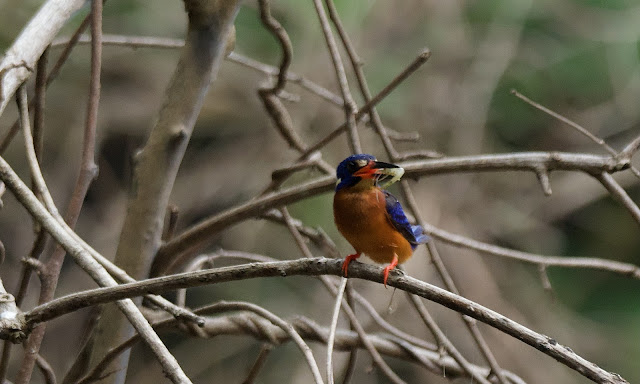Coraciiformes - Alcenididae - Alcedo meninting (Pekaka Bintik-bintik)
A diminutive dark blue kingfisher with no rufous on the ear-patch. It has an orange spot in front of the eye, white ear tufts on the sides of the neck, and an ultramarine-blue head and neck with darker blue bands giving it a scaly appearance. Upperparts glossy dark blue with paler blue central band down the back to the rump. White chin and throat with deep orange underparts. Males have black bill with brownish-red base, while females have almost entirely red bill. Juvenile also has dark blue upperparts, but has rufous cheeks and ear-coverts similar to Common Kingfisher. Inhabits well-shaded waterways in forested areas.
(eBird)
Young, learning, of failure and success.
* Propounding the essential - know what you do not know, strive without contending; The Way may be a tough way but it does not injure *
- know yourself, trust, stay your course -


































